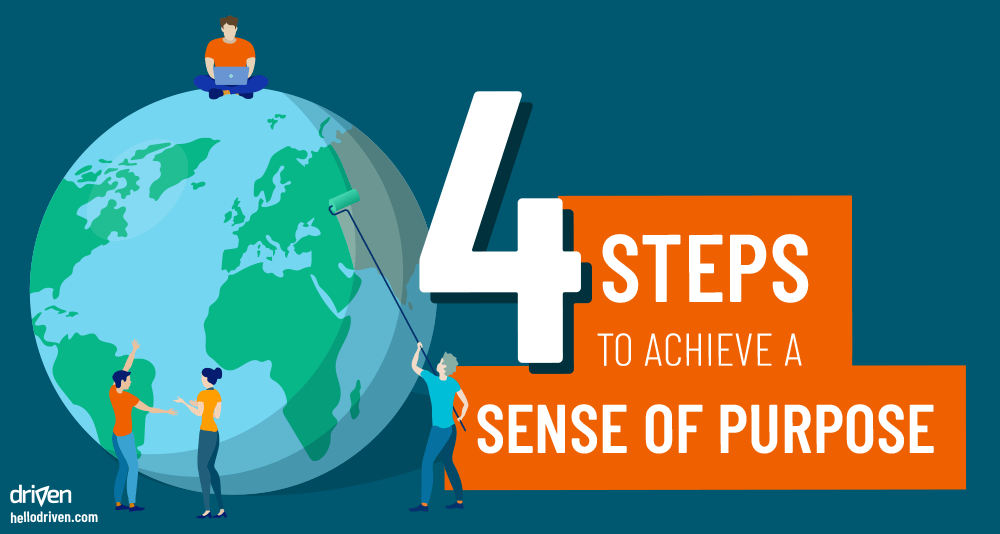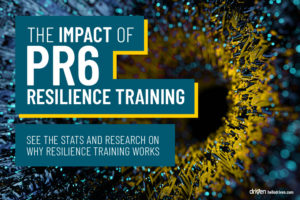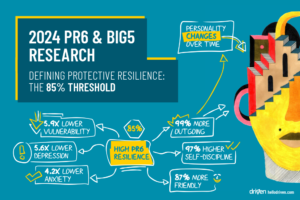Resilience is made up of six core domains. At the top of the domains is Vision, which is the most important of all the domains. So, what makes it more important for resilience than other domains? What are the consequences if we do not take care of this domain above all others?
Vision is about our sense of purpose and goals. It defines what is important to us, and what gives meaning to our lives. This is critical for resilience, as resilience is about our ability to advance towards our vision despite adversity along the way. Resilience is therefore not simply about bouncing back but is instead about a persistent pursuit of your purpose.
The virtues of clarity
Naturally, to be able to pursue your purpose, it’s important to know what that is. Without this, it is easy to end up in career choices and situations that you never intended. We may meander through life, work and relationships without anything to steer us towards something that provides true satisfaction. After a few decades, we wake up as if from a long coma, with David Bowie in our heads saying, “How did I get here?”
Clarity of purpose allows you to set strategic goals that support your purpose, defining how you will pursue it. For example, your purpose may be to “make a positive difference to the world”. Depending on who you are, there might be many ways you can choose to achieve this based on what you enjoy or excel at, for example:
Become a teacher to inspire young people
Create software that improves the wellbeing of people
Eliminate waste at companies by improving efficiency
Improve people’s day by making great coffee
All the different passions of people are useful in their own way. We each play a part through our diversity, and we can enhance that effect by always improving in what we do. The key is to be clear what you want to achieve, then translate that into a purpose and goals to pursue. Once you have that personal clarity at a strategic level, then you can set up the tactical goals to make it a reality.
Aligning goals to achieve congruence
Along with this clarity comes a hugely important step that is all too often ignored – that of congruence. Goals that have not been selected with an overall purpose in mind are often not aligned, or may even work against each other. For example, let’s say you have a goal to adopt as many stray dogs as possible, but also have a goal to travel around the world as much as you can. These goals don’t work well together, as all those dogs will need someone there to look after them, reducing your freedom to travel. Or perhaps you have a personal goal of becoming an honest person yet work for a company with shady business deals. Maybe you have a subconscious goal of relaxing at home every night, but a conscious goal of being extremely sociable and going to all the parties.
This situation causes frustration, as moving closer to one goal may actually move you further away from the other. Neuropsychotherapist and Nobel laureate Klaus Grawe wrote about this, saying that we are at our happiest and most fulfilled when “…current perceptions and goals are completely congruent with one another, and the transpiring mental activity is not disturbed by any competing intentions”
...current perceptions and goals are completely congruent with one another, and the transpiring mental activity is not disturbed by any competing intentions.
Converting to 4 Steps
Clarifying what Grawe has to say here, we can find a sequence of four steps that enables this sense of congruence which underlies achiemenent of purpose-striving:
We want clear goals.
We want to work towards those goals.
We want to see results in line with our goals.
Our goals and actions should not clash with other goals.
Here we see having congruence means aligning goals so that they support each other. When goals are congruent, moving closer to one goal also moves you closer to the others as well. Achieving this requires some hard decisions, but the result is a fantastically motivating state, which – interestingly – is also highly resilient. This is because a failure in one goal may still contribute to the success of others, making you more likely to achieve your goals. For example, perhaps you want to be a big figure in bodybuilding and spend years pursuing that goal, but it doesn’t work out. However, you spent tons of time doing research – and that part ends up becoming valuable as you move into a coaching role. If all your goals aim towards the same thing, they can move you forward even if one part of it ultimately never comes to fruition.
The difference between goals and responsibilities
This is a good time to distinguish between goals and responsibilities. Responsibilities are those things like family, and dependents – duties that you must take care of. Most people would say “family first”, which generally means that when the family needs something, everything else must wait. Responsibilities often take priority, however it is usually your goals that take up most of your hours in the day. Goals are what you come back to after you’ve taken care of responsibilities.
This is an important distinction to make, as responsibilities can often feel so pressing that they end up taking more and more time, moving you away from your goals. This often happens with having children, where the needs of the new family can easily eclipse all other goals – then after 20 odd years when your children move on, you find yourself wondering what to do next since your responsibilities became goals, and your original goals disappeared along the way.
Goals are what you come back to after you’ve taken care of responsibilities.
While attending to responsibilities, make sure to keep time aside for your own goals to pursue that which gives you a sense of purpose. Responsibilities and goals may not be fully congruent, but they should at least not work against each other. Thinking through these and making conscious decisions about them adds to your sense of clarity, and helps you communicate your approach to friends, family, partners and colleagues. As others know your priorities, they can better support you in your pursuits.
Supporting the domains of resilience
As people in your life support you, so do the domains of resilience support each other. Vision is most important because it guides the implementation of the other domains so they function more effectively. Let’s take a look:
Composure – Vision puts challenges and setbacks into perspective, helping you stay calm by focusing on what’s important.
Reasoning – Vision defines the goals that drive the application of your creativity and resourcefulness.
Tenacity – All about persistence, Vision defines what you should be persistent about, motivating us even when things get tough.
Collaboration – Your goals and purpose influences which people to network and connect with.
Health – Vision determines your own goals about your body and health, guiding your habits.
This global influence of Vision illustrates just why it is so important to us, and why we can so easily feel lost without the clarity and congruence that comes from this domain.
In turn, all of the other domains of resilience function to support you in achieving your goals. This ongoing interaction between the domains causes a virtuous circle, making you stronger, better able to manage stress, and able to juggle more various aspects of life in a healthy, sustainable way.
All the best,
Jurie



